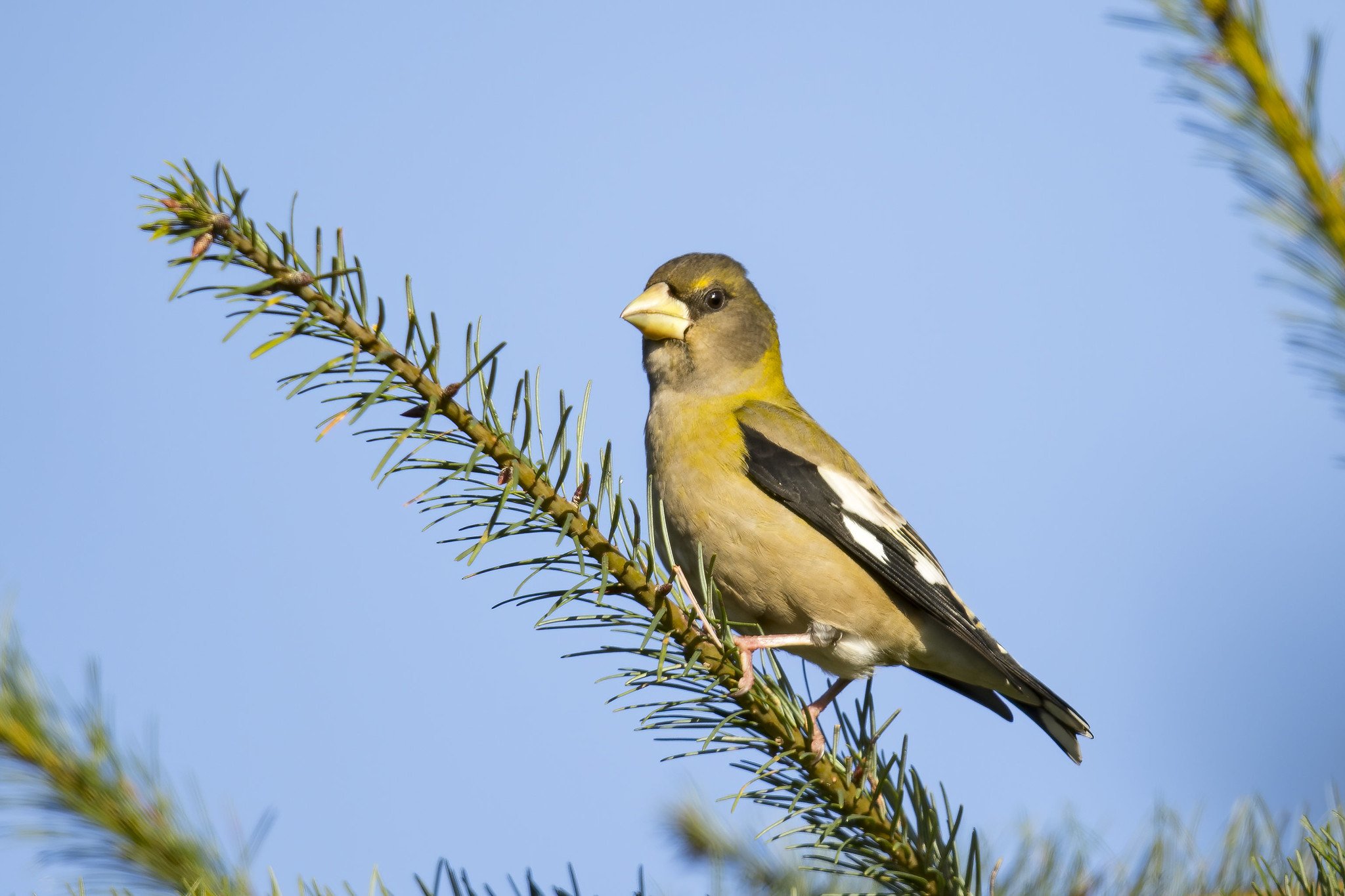Evening Grosbeak. Photo by Mick Thompson
The Evening Grosbeak is a relatively uncommon bird in southern Wisconsin, typically appearing at winter feeders or on crops of cones. I’ve never seen the bird in southern Wisconsin; in fact, I hadn’t thought about the bird as much more than a boreal species, just reaching into the southern parts of the state around late fall to take advantage of seed crops.
My ignorance of the bird cues us into something important in ecological research: the “invisible present.” For instance, we all see the oak tree in our backyards or local parks. If that tree falls over, it’s apparent to us. But what if, during leaf out, that oak tree produced 15% fewer leaves each year… would you notice? An average mature oak tree has 200,000 leaves, and after five years the tree would be down to half its leaves. After 60 years just 14 leaves would remain. At some point, say 15 or 30 years in, you might notice that the tree looks sickly or “off”, but we could be well past the point of saving the tree. Furthermore, your kids or grandkids might start looking at the tree when it has just 300 leaves left. By the time those kids are 15 the tree might only have 30 leaves left but the change as they witnessed it wasn’t that fast–this sadly-foliaged tree is the new normal for them.
The same sort of thing can happen with many ecological problems. For instance, with the Evening Grosbeak, its decline during the annual Christmas Bird Counts has amounted to about 15% per year, just like our oak tree. Since 2000 those numbers have leveled off to almost 0 on CBC’s, so in my time of birdwatching, a CBC without grosbeaks is the new normal. The causes of this decline are hard to pin down but may include spraying of spruce budworm in Canada, which is done for forestry practices but effectively eliminates this food source for grosbeaks and other boreal species. Other causes might include climate change, deforestation, or the structure of forests. Evening Grosbeaks did expand in the early twentieth century to the eastern US—it’s thought due to planting of boxelder trees (an important seed source)—so it could be that what we’re seeing now is a gradual decline after a big advance across the continent.
Evening Grosbeak at a feeder. Photo by Andy Reago & Chrissy McClarren
Why grosbeak, you might ask? Gros means “thick” in French, and this bird’s beak has the ample size to crunch through thick seeds, fruits, and nuts. The males are brilliantly colored black, yellow, olive, and white with a massive beak. As it stands, they’re shuffling through the invisible present, and the best we can do is watch, listen, and document when they might return, which is actually happening about now throughout Wisconsin.
It appears to be an irruption year for the Evening Grosbeak. Data from eBird shows a small spike in Dane and Jefferson counties this year (shown in purple).
Large flocks are also moving through feeders in northern Wisconsin. Now is a good time to check feeders or seed bearing trees for distinguished flocks of Evening Grosbeaks, making themselves visible in southern Wisconsin once again.
Written by Drew Harry, Faville Grove Sanctuary land steward







